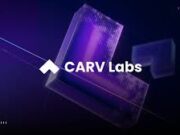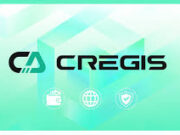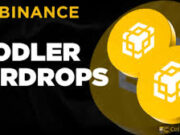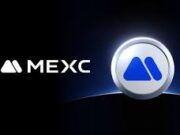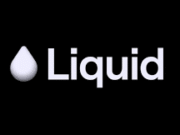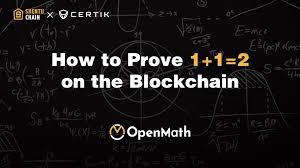In a bold step forward for the world of mathematics and blockchain, OpenMath has introduced a novel on-chain theorem citation mechanism designed to reduce computation costs — and fairly reward creators of logical content. In this blog post we walk through how the system works, explore its major benefits, discuss key implications, and share how you might participate.
What’s Happening?
The OpenMath platform — built in partnership with CertiK and deployed on the Shentu Chain — now allows users to publish theorems and proofs directly on-chain, reference existing theorems, and benefit from a citation-based reward structure. (GlobeNewswire)
Here’s a high-level view of the process:
- A mathematician or “prover” formalises a theorem and submits it to OpenMath.
- The proof is mechanically verified using proof assistants (such as Coq or Lean) integrated into the workflow. (blockchainreporter)
- Once verified, the theorem becomes a referenceable object on-chain, with its provenance recorded immutably. (CoinTrust)
- Future submissions that build on, cite or reference that theorem incur lower gas fees (because they are re-using verified results) and optionally provide creator rewards to the original theorem’s author(s). (X (formerly Twitter))
In short: theorems become part of a public, immutable knowledge graph on-chain; citation is rewarded; and computational cost is reduced when re-using existing logically-verified work.
Why This Development Is Significant
1. Immutable Knowledge Records
Traditionally mathematical theorems are published in journals or pre‐prints, which then rely on human peer review and may not always provide transparent provenance or easy reuse. With OpenMath, the record of “theorem X was proved by Y at time T” is locked into the blockchain. That means the history and attribution are tamper-resistant.
2. Efficient Proof Ecosystem
Verifying complex theorems can be computationally expensive. By enabling citations of already‐verified theorems, later submissions can avoid re-running expensive proof steps. In practice, referencing a proven theorem implies less “work” for the chain and hence lower gas costs. The gas savings mechanism encourages reuse of verified building‐blocks rather than reinvention of the wheel. (X (formerly Twitter))
3. Creator Incentives
One of the most interesting aspects is the reward system: when you publish a theorem that others later build on, your work generates value. Citations of your theorem yield rewards. This aligns the incentives of logic creators with the broader network’s advancement. The system encourages mathematicians to publish rigorous, reusable theorems rather than hoard results behind paywalls.
4. DeSci and Open Collaboration
This fits squarely within the broader movement of Decentralised Science (DeSci), where research is opened up, validated transparently, and incentivised via network protocols rather than legacy institutions. OpenMath claims to be the “world’s first mathematical DeSci platform”. (blockchainreporter)
How It Works In More Detail
Submission Flow
- Problem Definition – A user proposes a theorem or statement, stating the conditions and desired result.
- Proof Submission – The prover submits a formal proof. The system may utilise proof assistants like Coq or Lean to check correctness. (MEXC)
- Verification on-chain – Once verified, metadata about the theorem (including author, timestamp, proof-hash) is committed to the chain.
- Citation and Reuse – Future submissions referencing this theorem include a citation in their on-chain metadata. Because the cited theorem is already verified, the new submission incurs reduced gas consumption.
- Reward Distribution – The citation event triggers a reward to the cited‐theorem’s author(s). That reward may come via tokens or other mechanisms defined in the protocol.
Gas-Cost Savings Logic
Because on-chain verification of large proofs is expensive, the system encourages referencing existing verified results rather than re-verifying from scratch. Mathematically this resembles reuse of lemmas in a proof: once a lemma is proven, you simply cite it and move on to the new part. On-chain, the “cost” of the lemma is borne once; subsequent uses are cheaper. OpenMath’s documentation suggests this is a core incentive. (X (formerly Twitter))
Attribution & Provenance
All submissions, verifications and citations are time-stamped and logged on the blockchain. That means a future reader can trace “Theorem A → proved by X at date D → cited by Theorem B at date D2” with full transparency. That traceability is key for academic/industrial use, especially if reuse becomes commercialised.
Two-Phase Submission (Protection of IP)
To protect novel contributions, OpenMath reportedly uses a two-phase submission model: an initial “commit” or “abstract” phase plus a later “reveal/proof” phase. This helps authors protect their work (while still participating in the network) until they’re ready to expose full details. (CoinTrust)
Potential Impact Across Fields
Mathematics & Formal Methods
For pure mathematics, this opens the door to a highly transparent, reusable knowledge base of mechanically verified theorems. Collaborative research could accelerate: researchers don’t need to independently re-prove widely accepted results if they are already verified and referenced.
Computer Science & Formal Verification
In software verification and formal methods, the production of verified theorems is central. OpenMath’s model could bridge academic results with industrial verification by providing an on-chain repository of verified lemmas, widely accessible and linked to incentives.
Education & Knowledge Sharing
Imagine a repository of textbook-level theorems, formalised and publicly verifiable, accessible in the OpenMath graph. Instructors and students could reference exact theorems with full provenance; this could help shift educational materials from informal statements to machine-checked formal objects.
Web3 / DeSci Ecosystem
Beyond mathematics, this heralds a model where creators are rewarded for abstract knowledge rather than mere tokens or NFTs. It may encourage other domains (physics, logic, algorithm proofs) to adopt similar citation/reward systems.
Challenges and Considerations
Of course, as with any innovation, there are caveats.
- Quality Control: While proof assistants assure correctness, the broader network must guard against “low value but verifiable” entries that add little new insight but clutter the system.
- Incentive Design: How large are the rewards? How to ensure fairness and avoid gaming? If rewards are too low, creators may not engage; if too high, spam risk arises.
- Adoption by Mathematicians: Many mathematicians are not currently embedded in blockchain ecosystems. Will this attract the quality authors needed?
- Interoperability & Standards: Formal proofs use various systems (Coq, Lean, Isabelle). Ensuring compatibility and standard metadata will be important.
- Gas/Cost Economics: While citations reduce costs, initial proof verification still uses gas. The economics must be carefully calibrated so creators aren’t driven off by high upfront costs.
- Legal / IP issues: Two-phase submission helps, but publishing formal theorems may still intersect with prior art, patents, or existing publication rights.
What’s Ahead for OpenMath?
In its roadmap, OpenMath plans to expand beyond “theorems” to more complex formal objects — maybe entire proof libraries, verified algorithms, or reusable modules of formal knowledge. They also envisage broader collaboration across multiple dom ains of mathematics and logic. (MEXC)
At the same time, ecosystem tools will likely improve: user-friendly interfaces to submit proofs, templates for citations, dashboards showing your “citation count” and reward history. Communities will form around sub-domains (e.g., number theory, topology) and networks of verifiers will establish reputational systems.
From a practical perspective: if you are a mathematician or formal methods expert you may want to explore how to participate — register on the platform, understand submission guidelines, perhaps convert some of your existing results into submission-ready formalised theorems. For others (educators, students) the platform may soon become a resource: look up theorems, inspect formal proofs, cite them in your work.
Closing
OpenMath’s on-chain theorem citation feature is a fascinating confluence of mathematics, blockchain and knowledge economics. By making verified theorems reusable, reducing cost via citation incentives, and rewarding creators, the platform charts a fresh path for how mathematical knowledge can be generated, validated and shared.
If this network gains traction, we may see a shift: mathematicians as not just theorem-provers, but network participants whose contributions accrue citations and tokenised rewards. Meanwhile, students and educators gain access to formal, public, verifiable knowledge records. The implications extend far beyond math — this citation-plus-reward model might well inspire similar systems in other scientific domains.
If you’d like to explore how to submit your own theorem, or cite existing work on OpenMath, I’m happy to walk you through the steps in more detail.
Sources:
- “Shentu Chain and CertiK Launch OpenMath, The World’s First Mathematical DeSci Platform” — Globe Newswire, Oct 13 2025 (GlobeNewswire)
- “Shentu Chain and CertiK Unite Blockchain and Mathematics in a DeSci Breakthrough” — Blockchain Reporter, Oct 14 2025 (blockchainreporter)
- OpenMath citations and gas-fee incentive twitter post by Shentu Chain (X (formerly Twitter))


